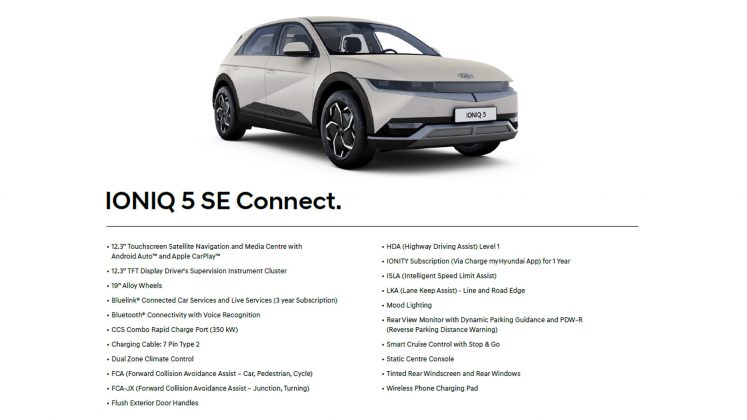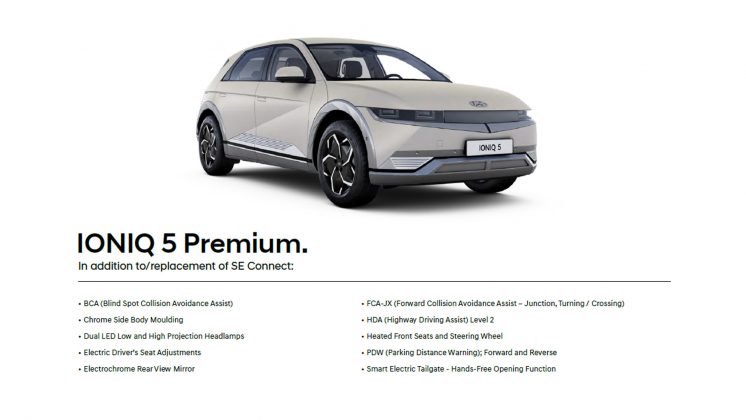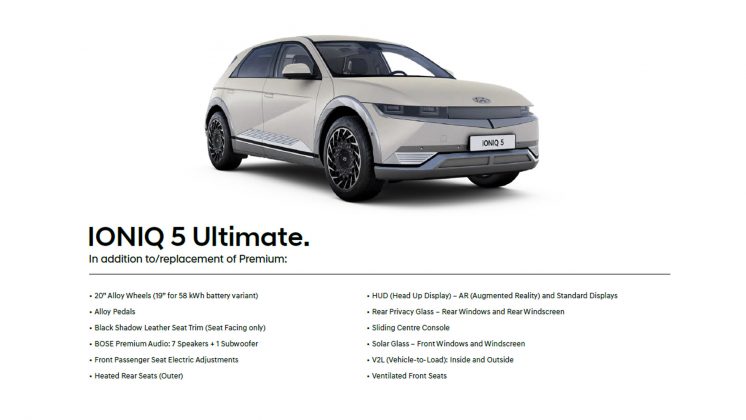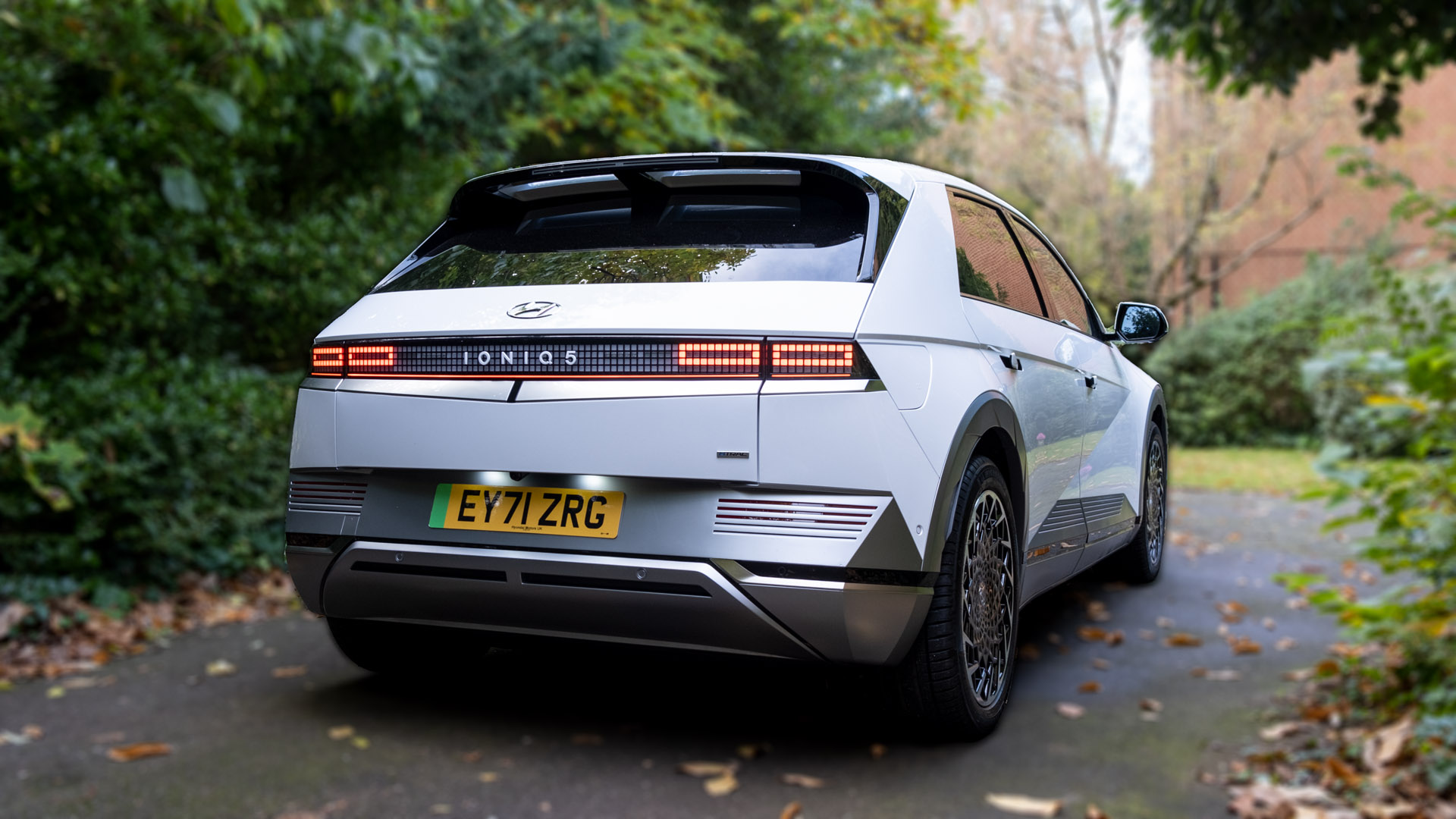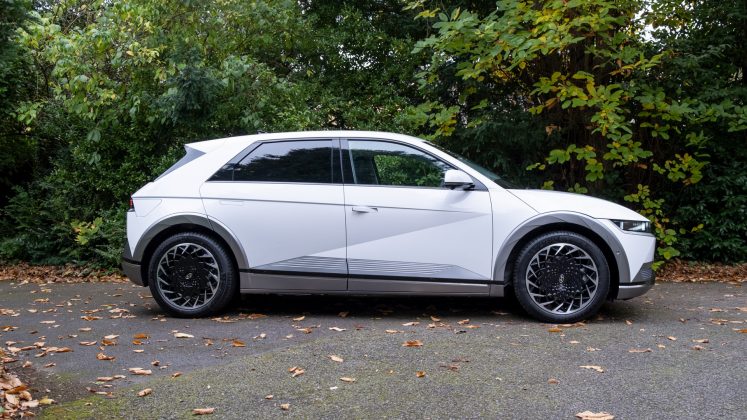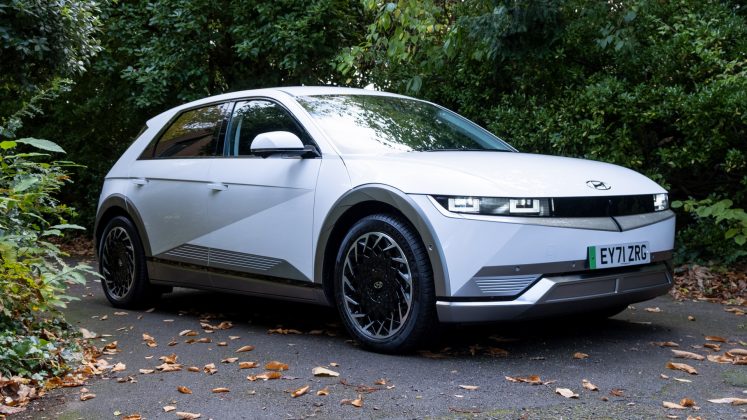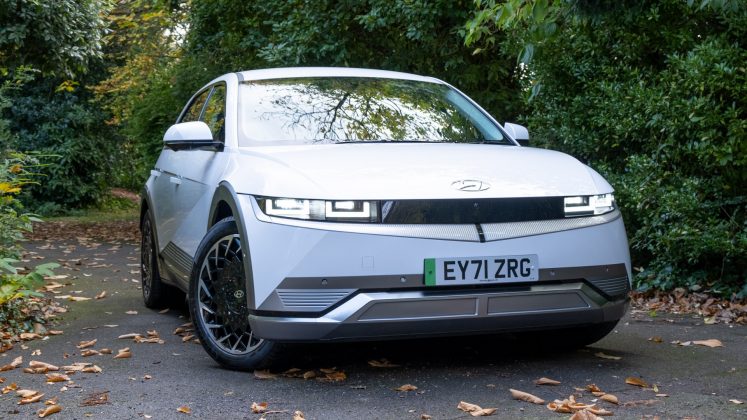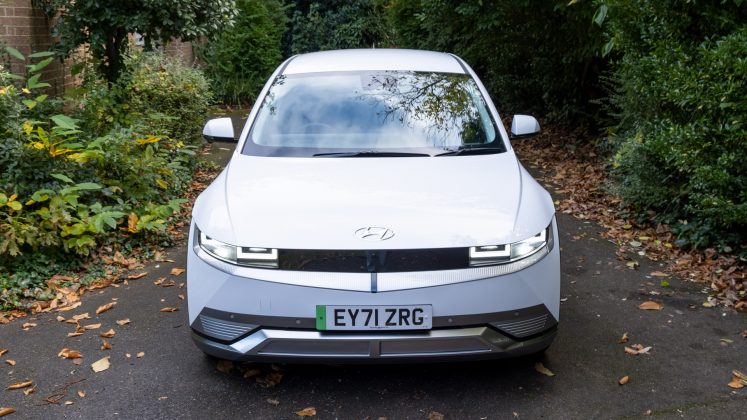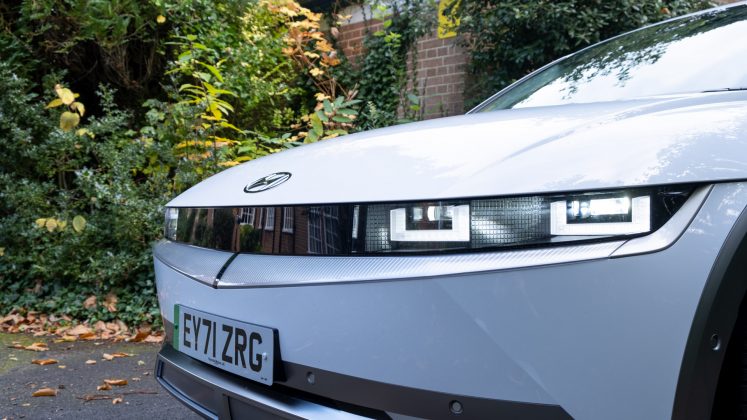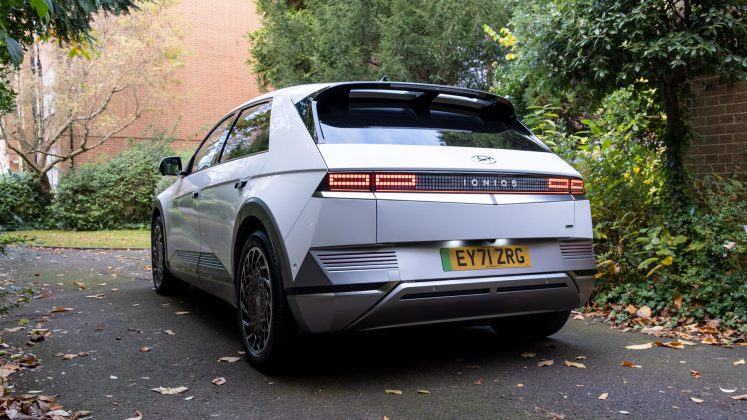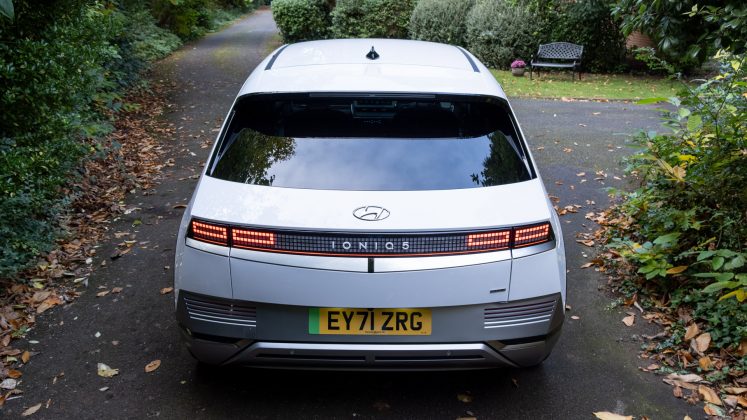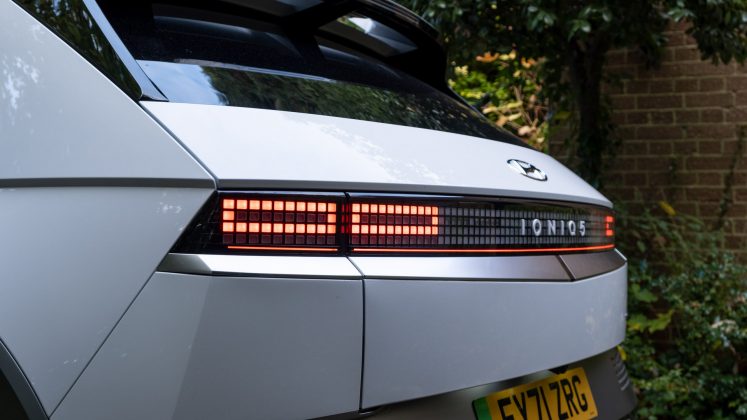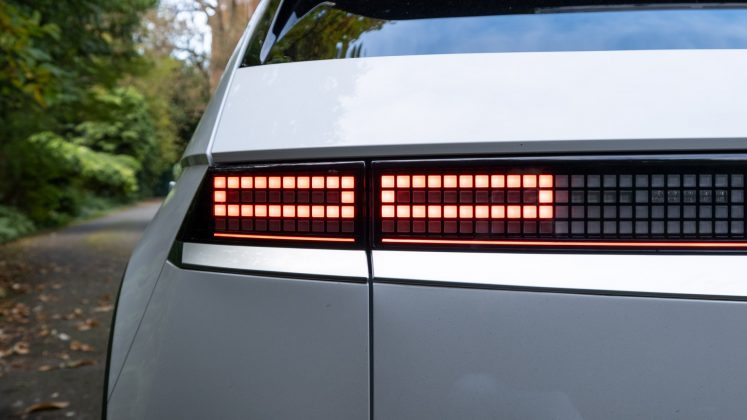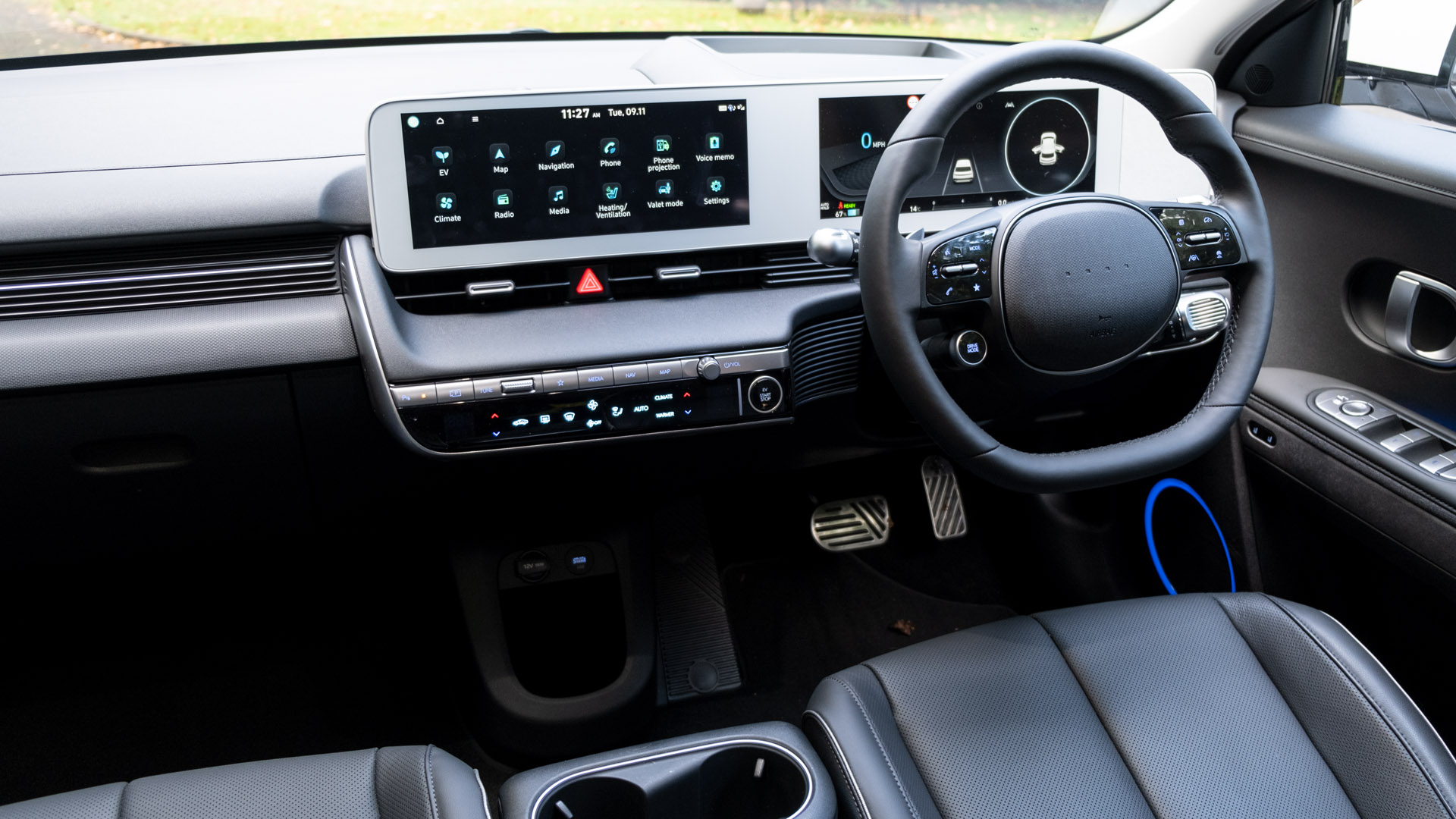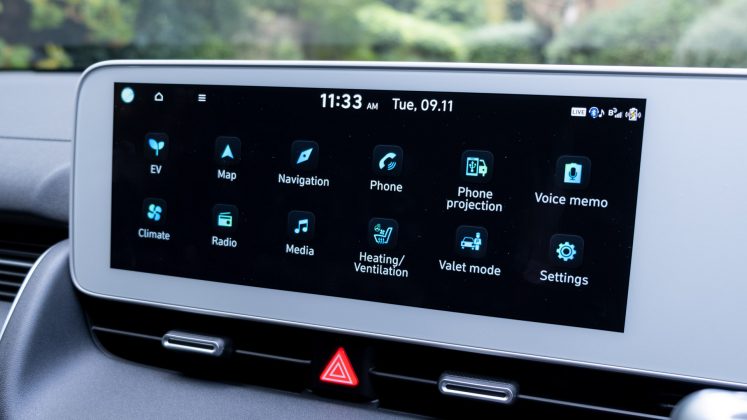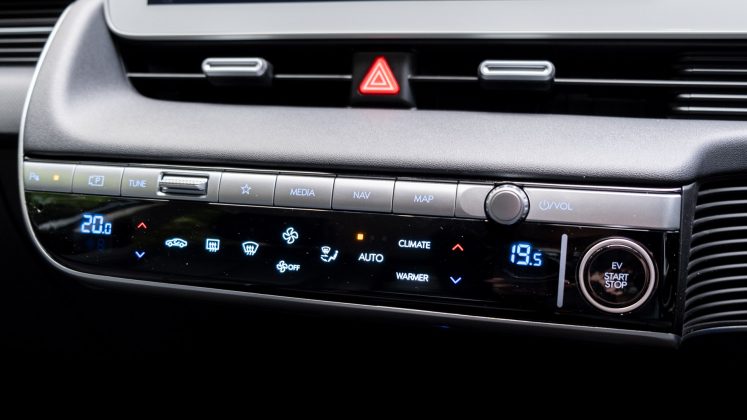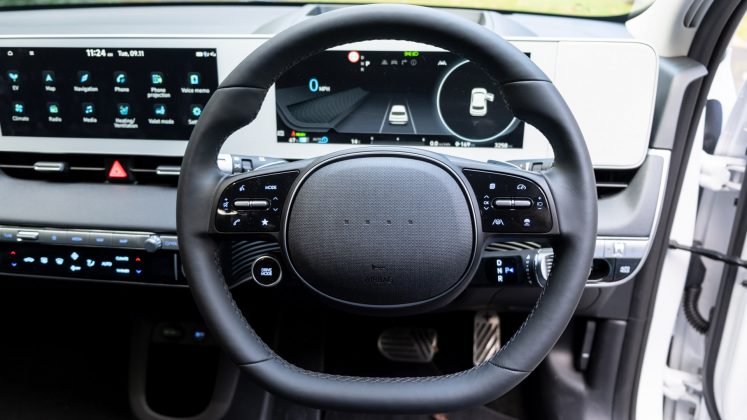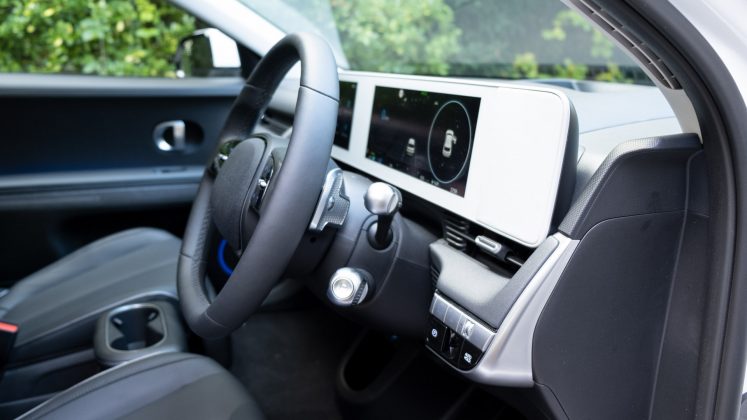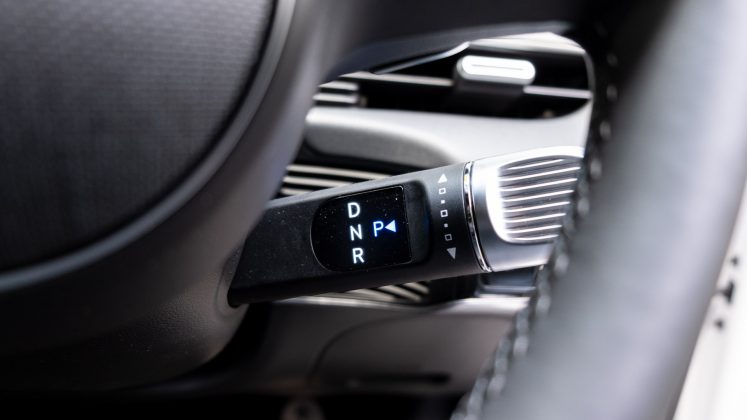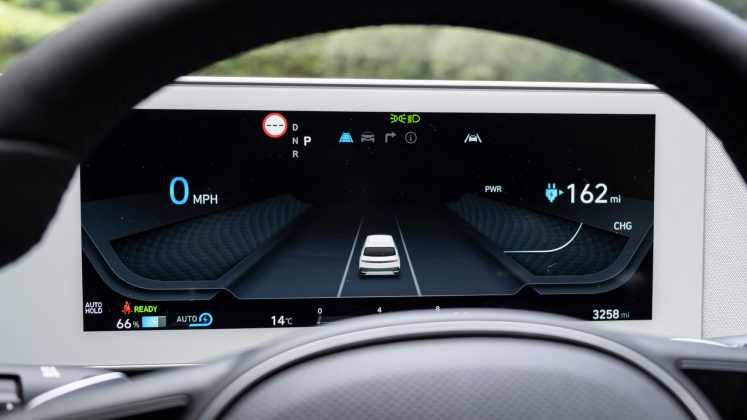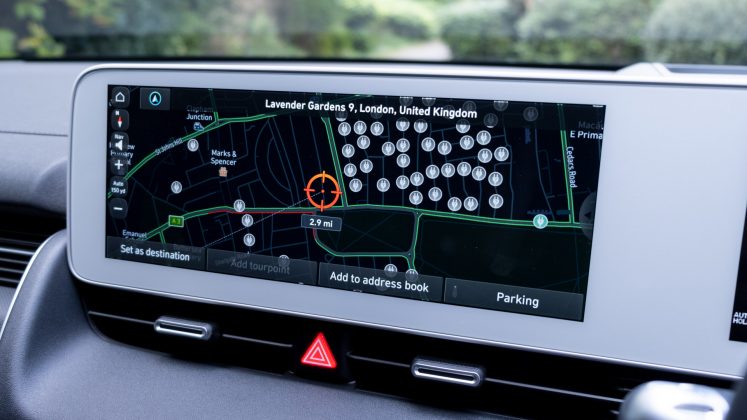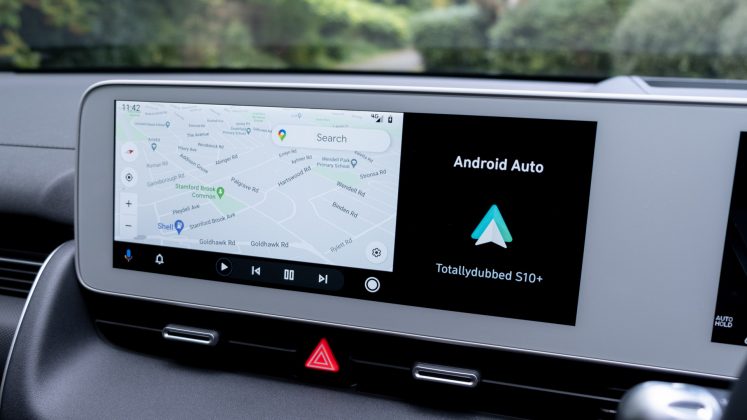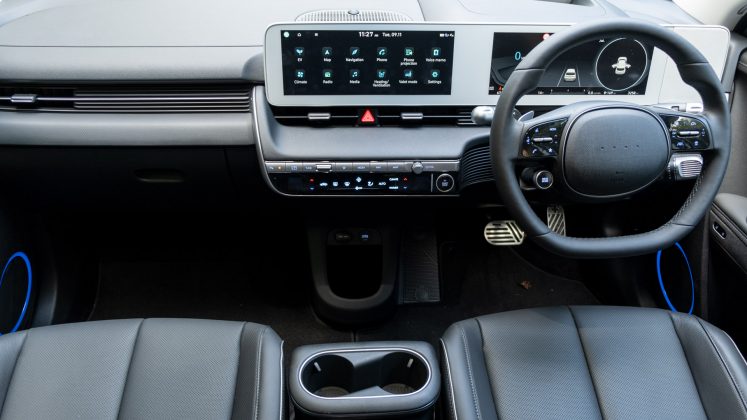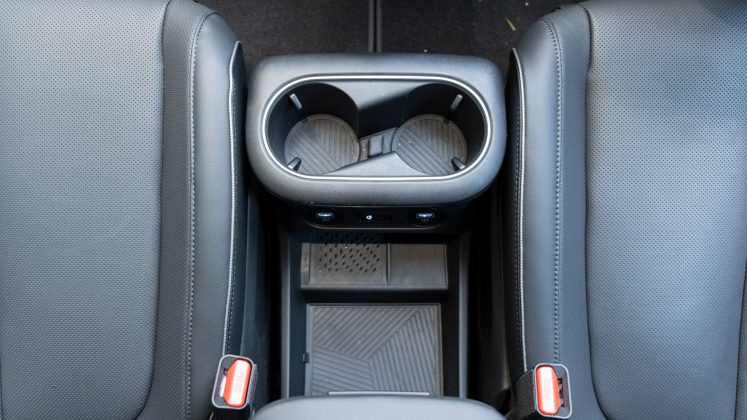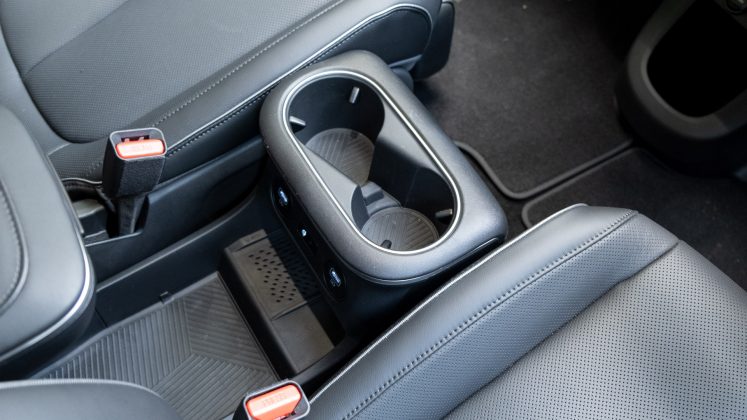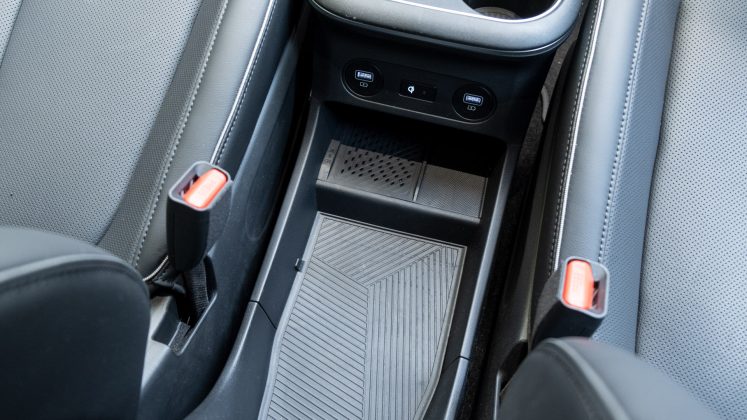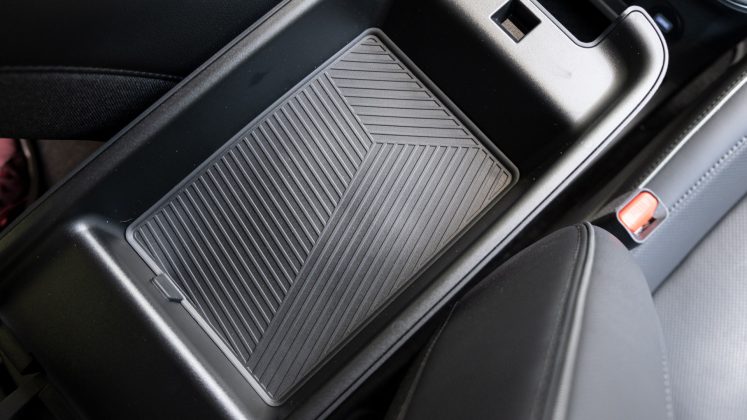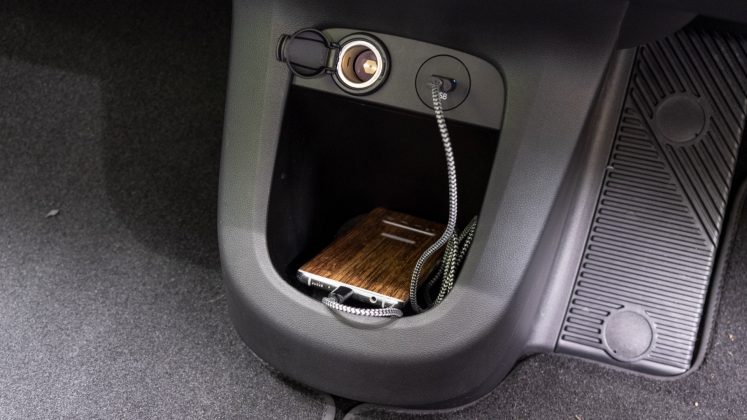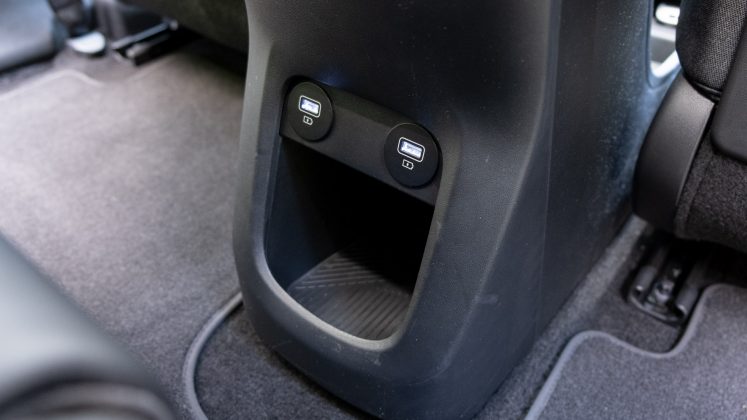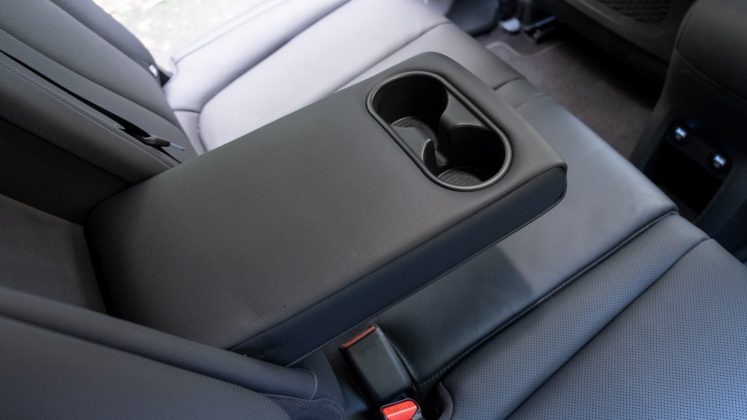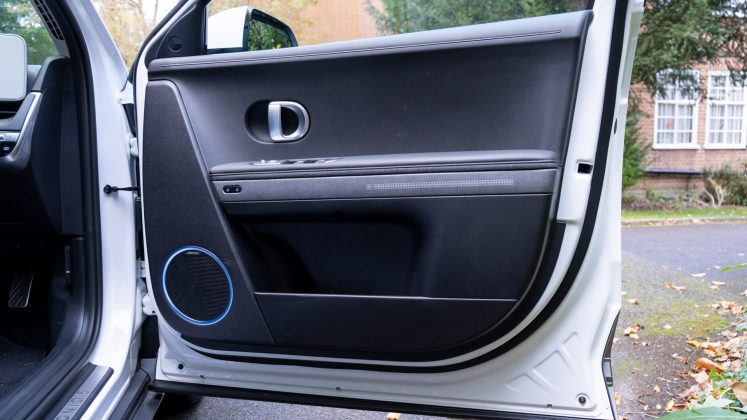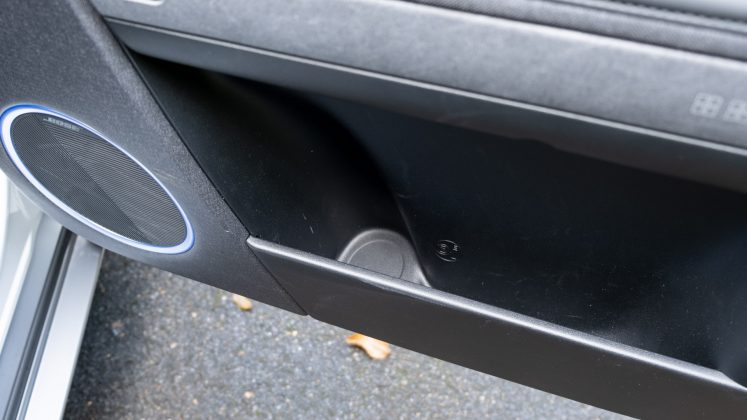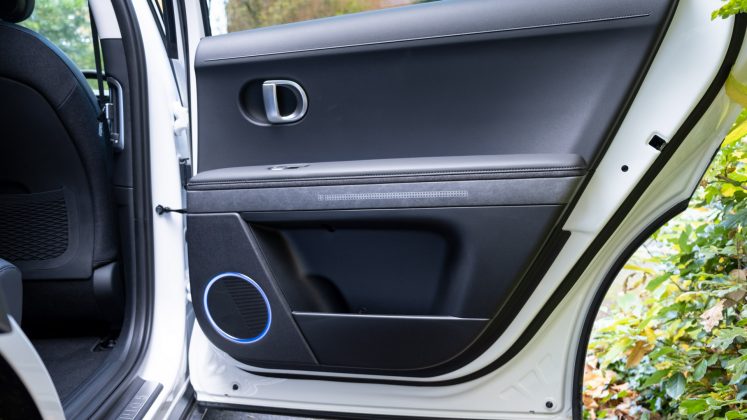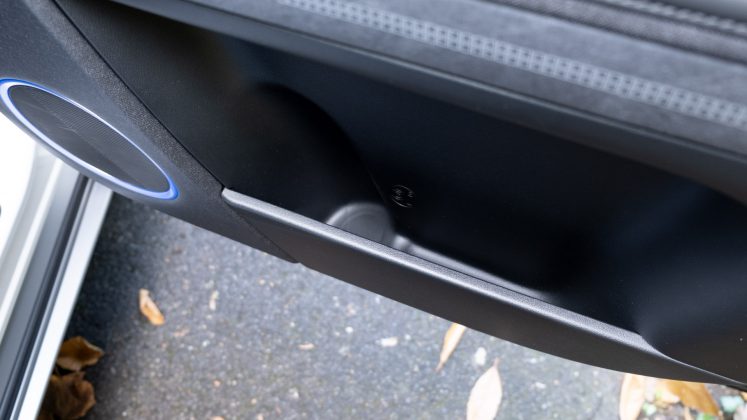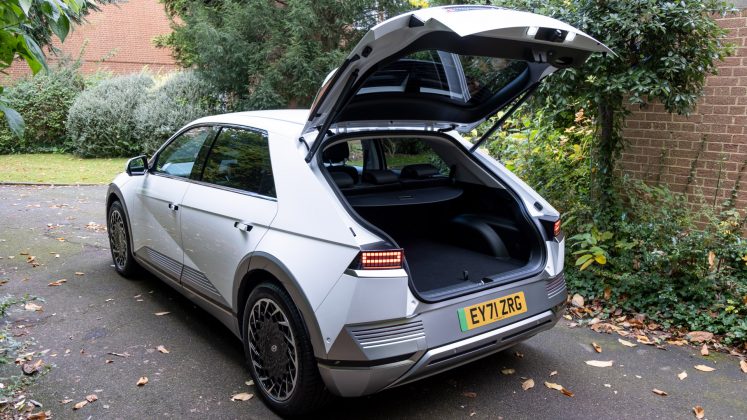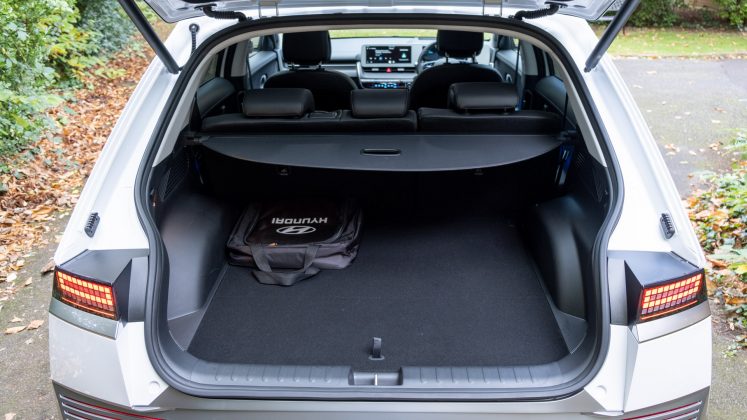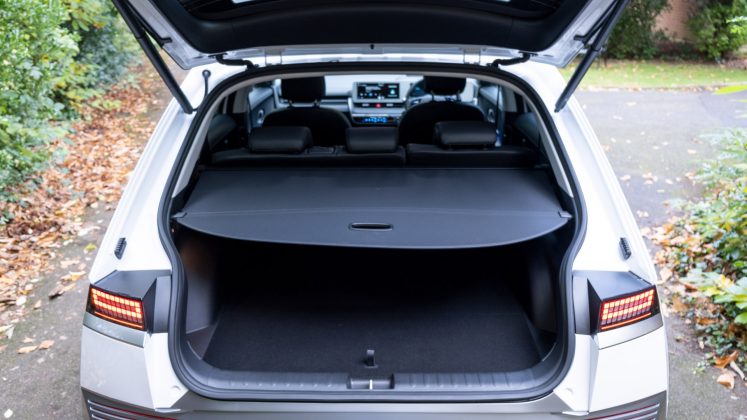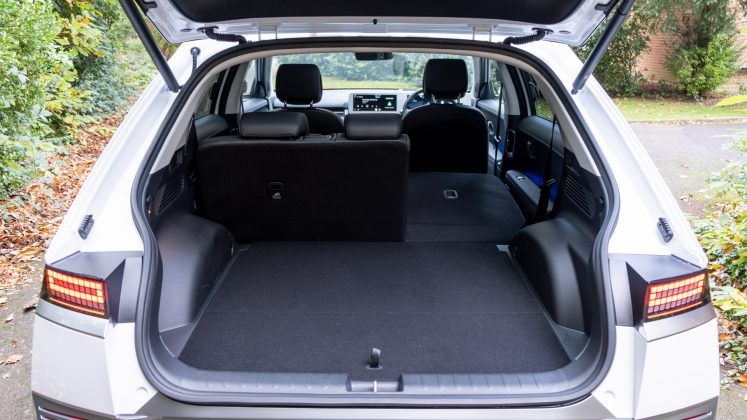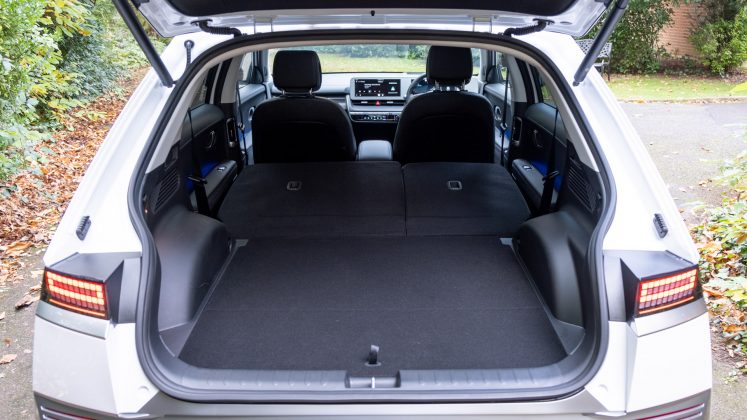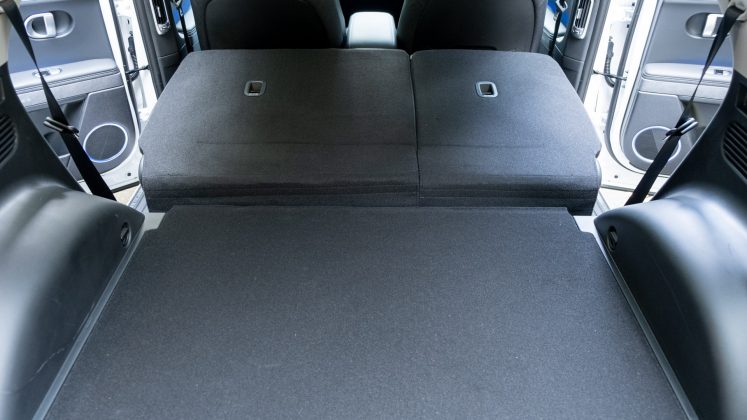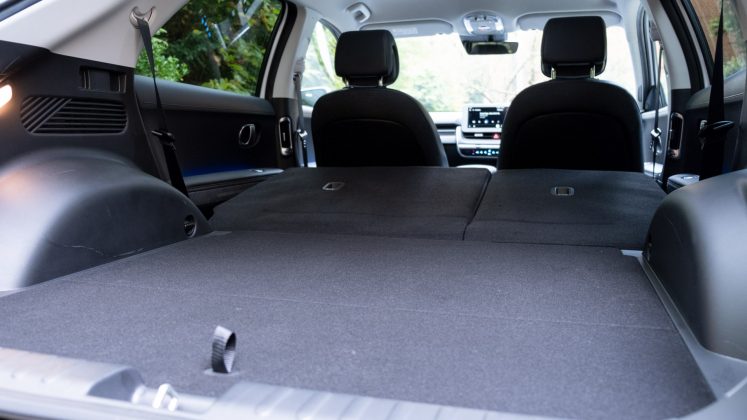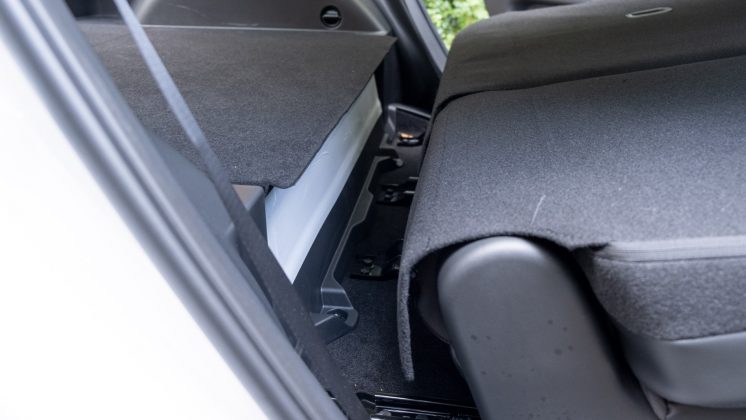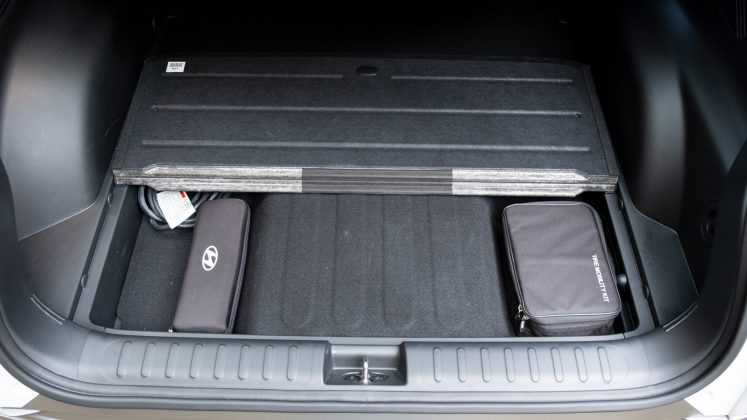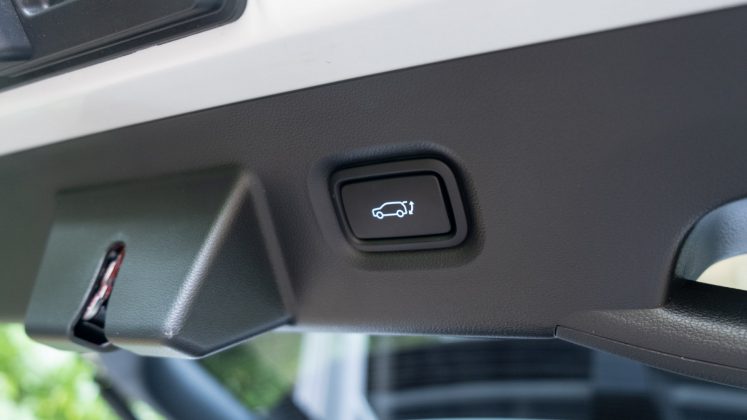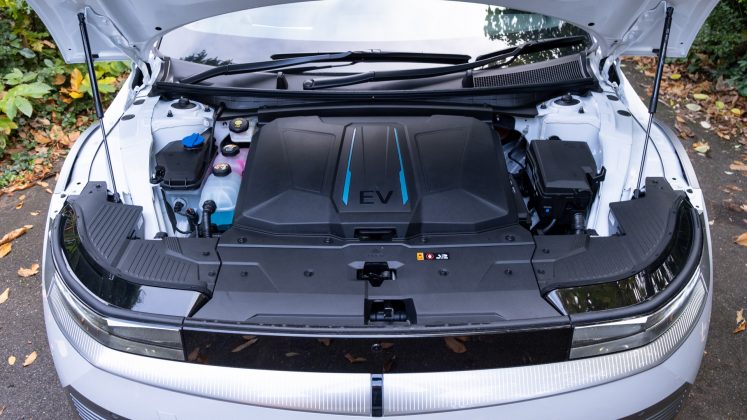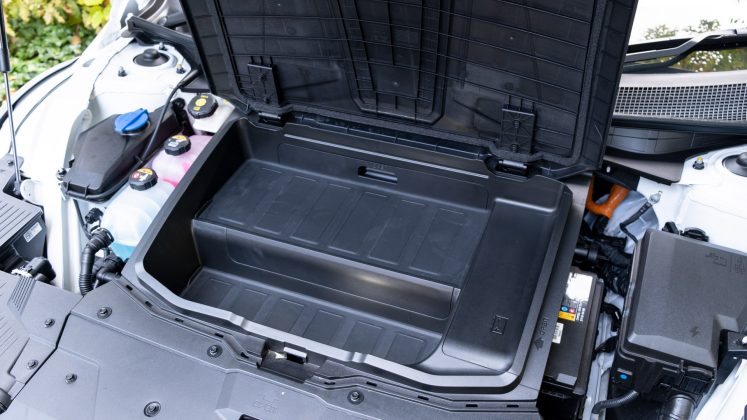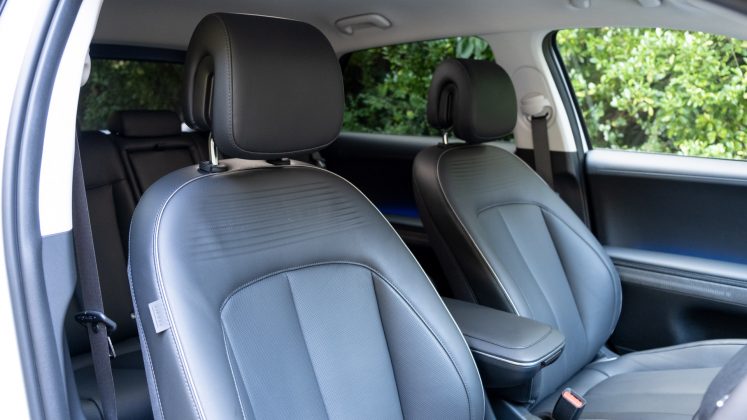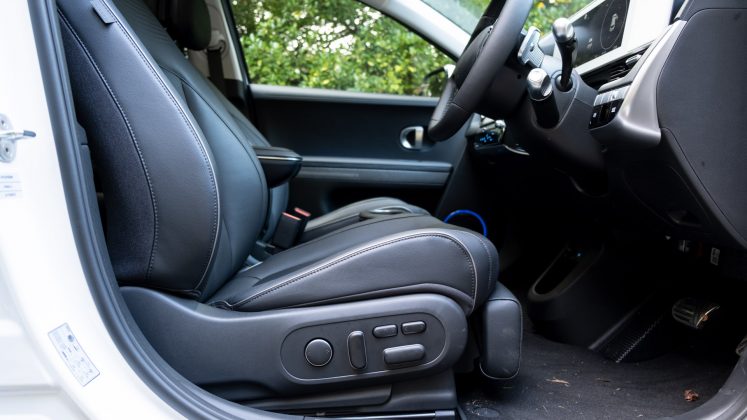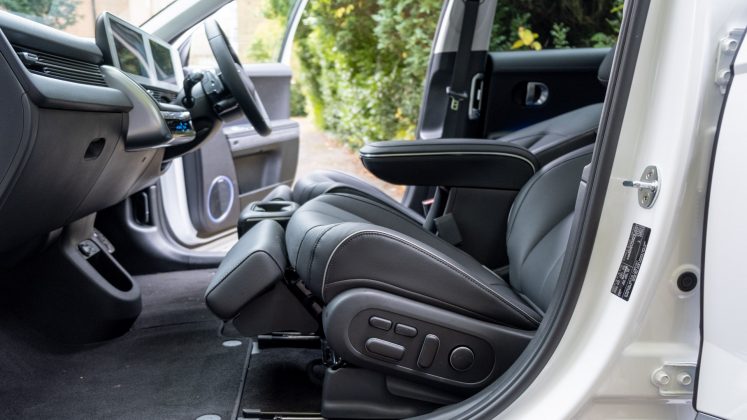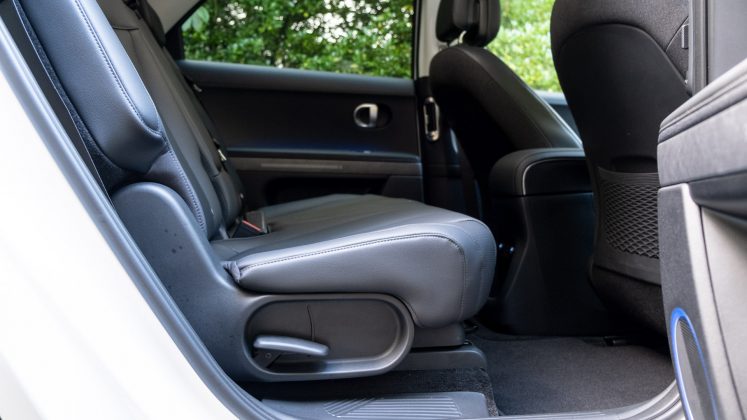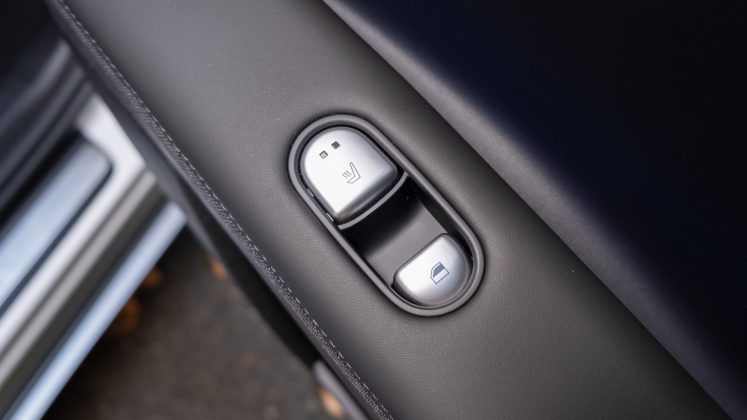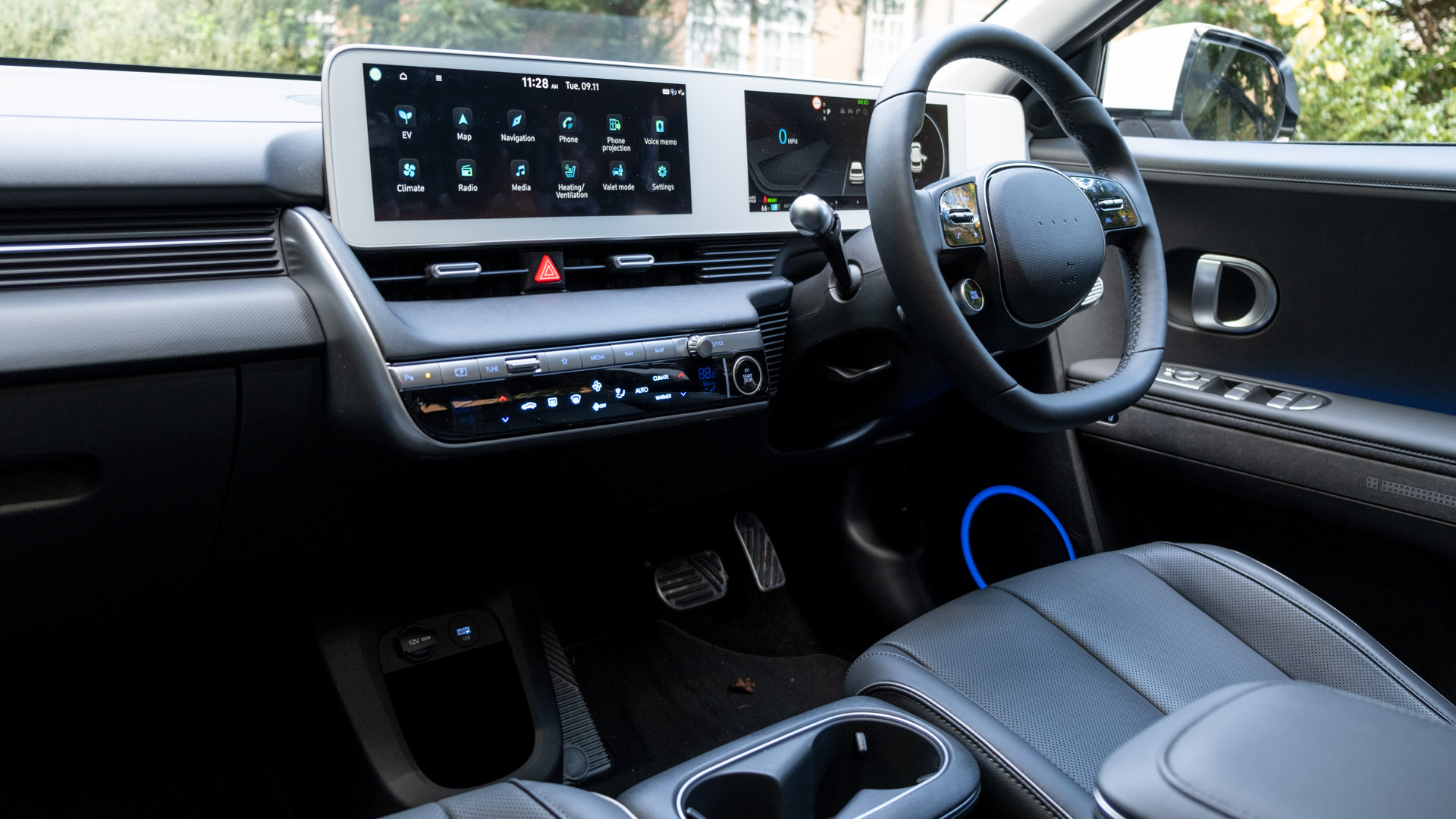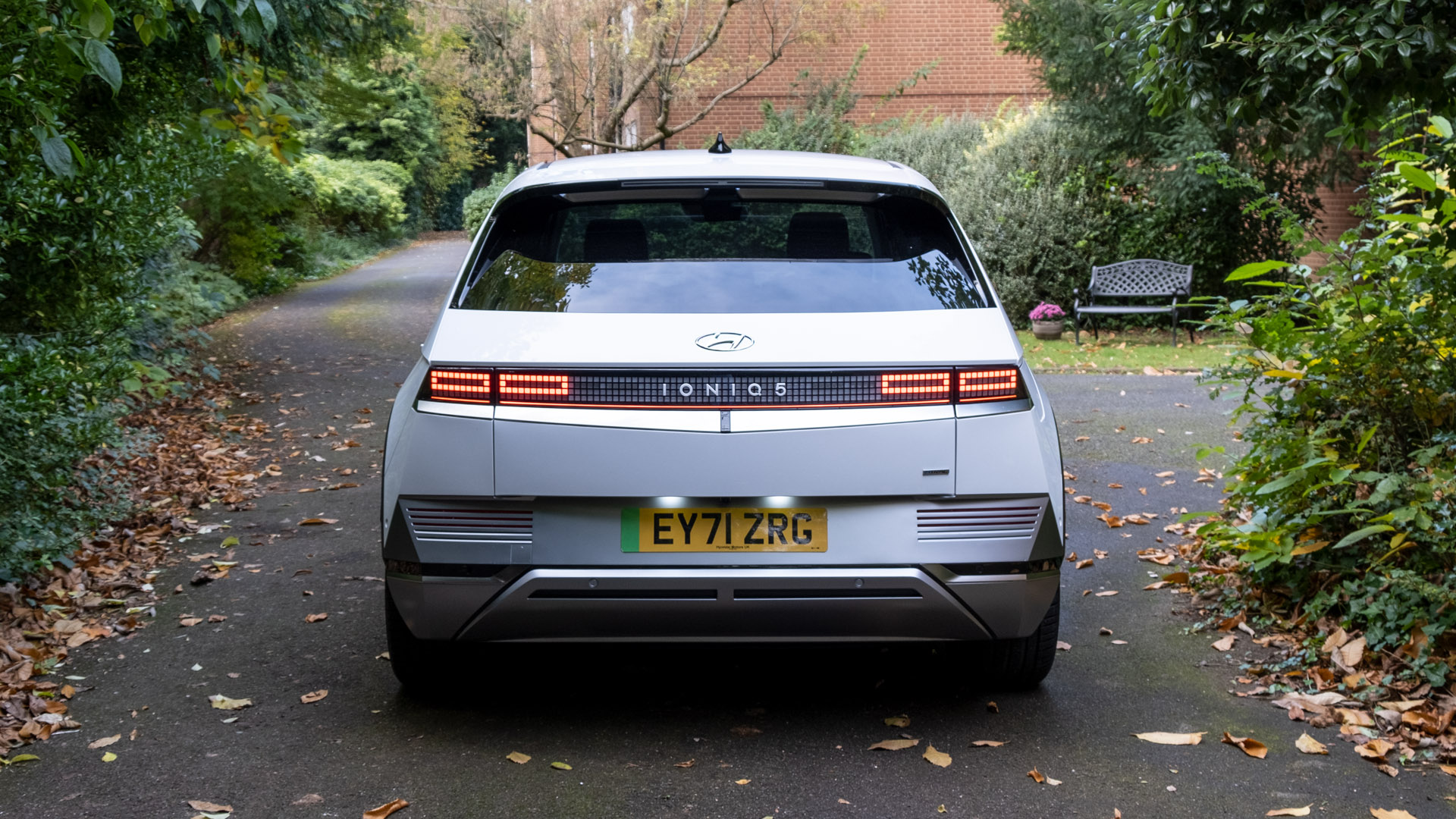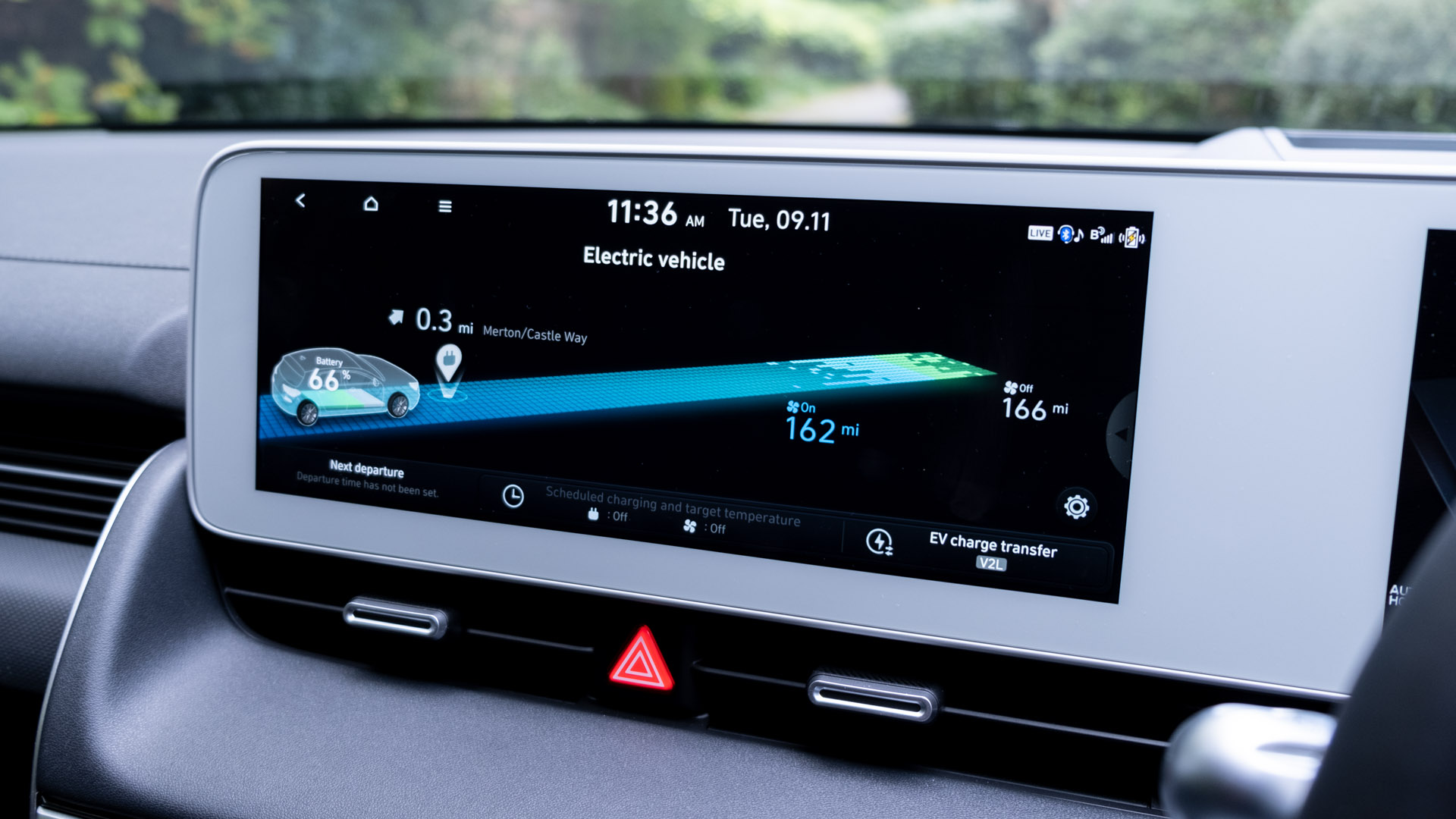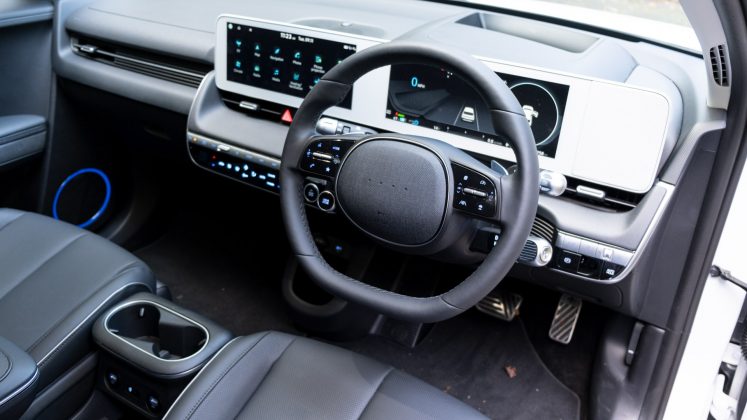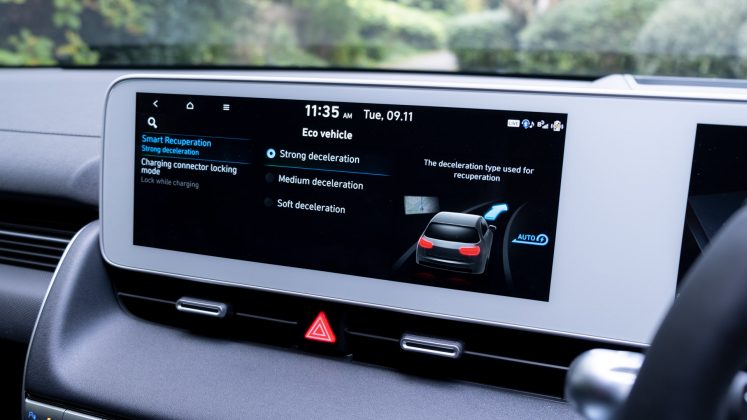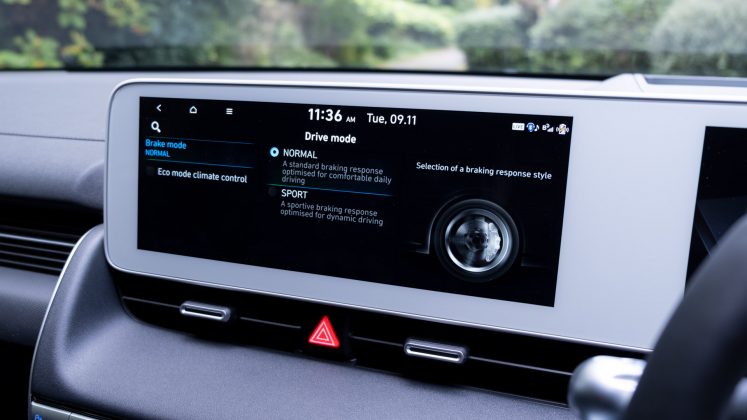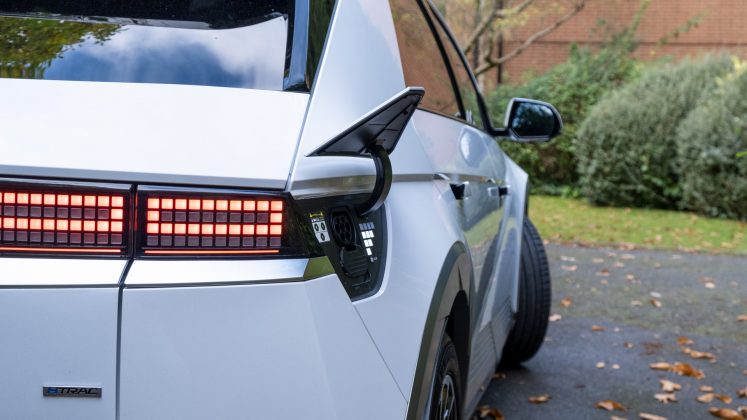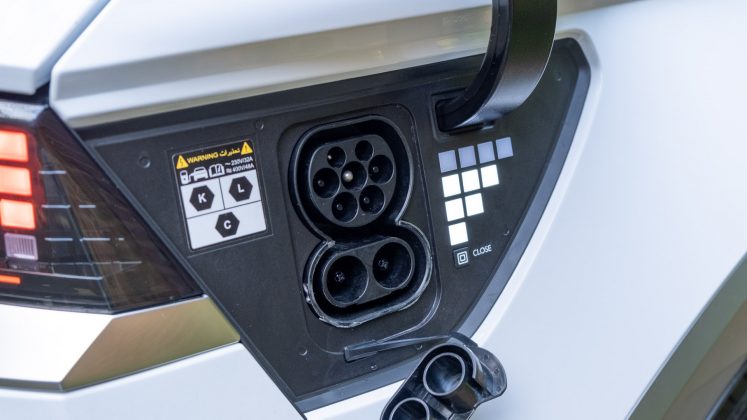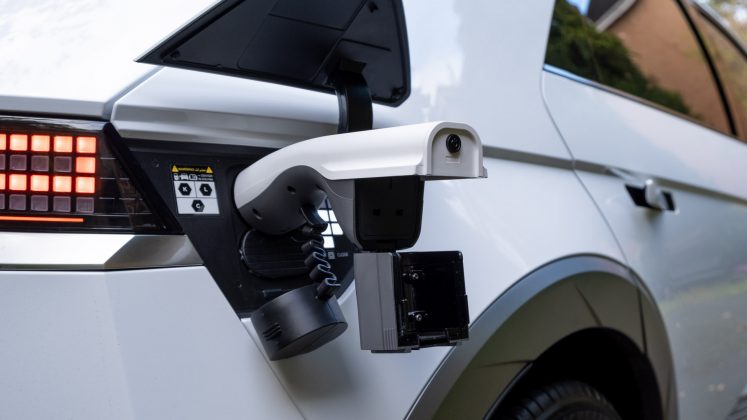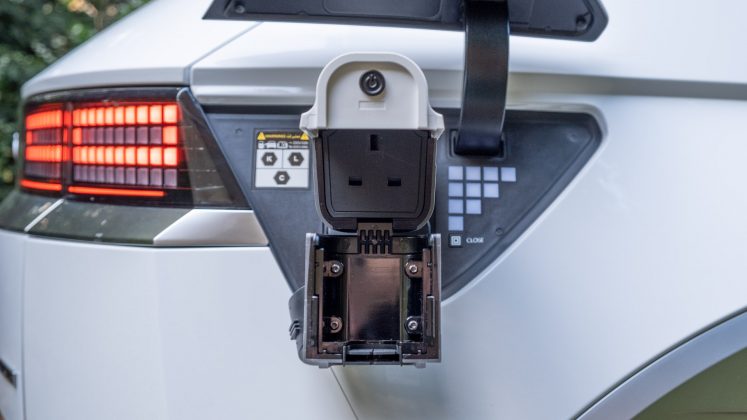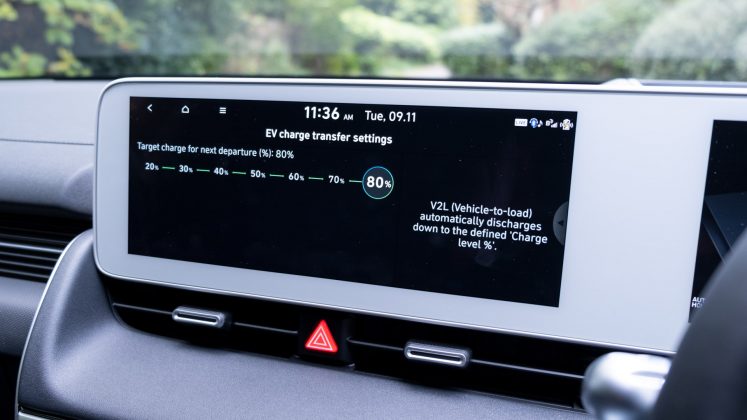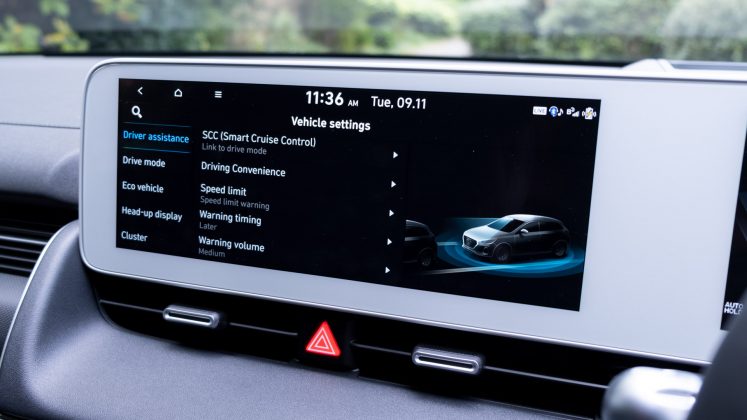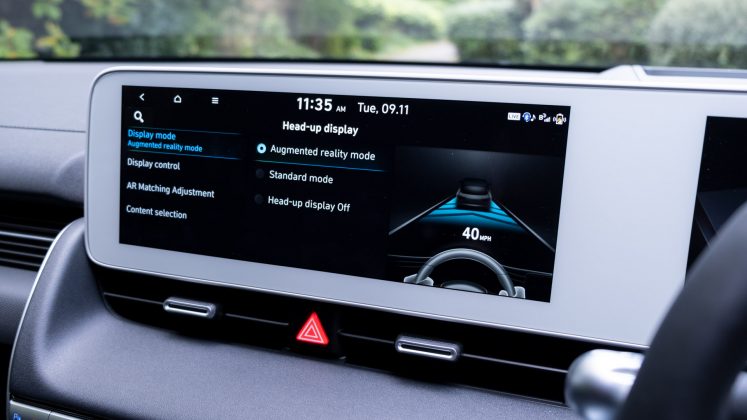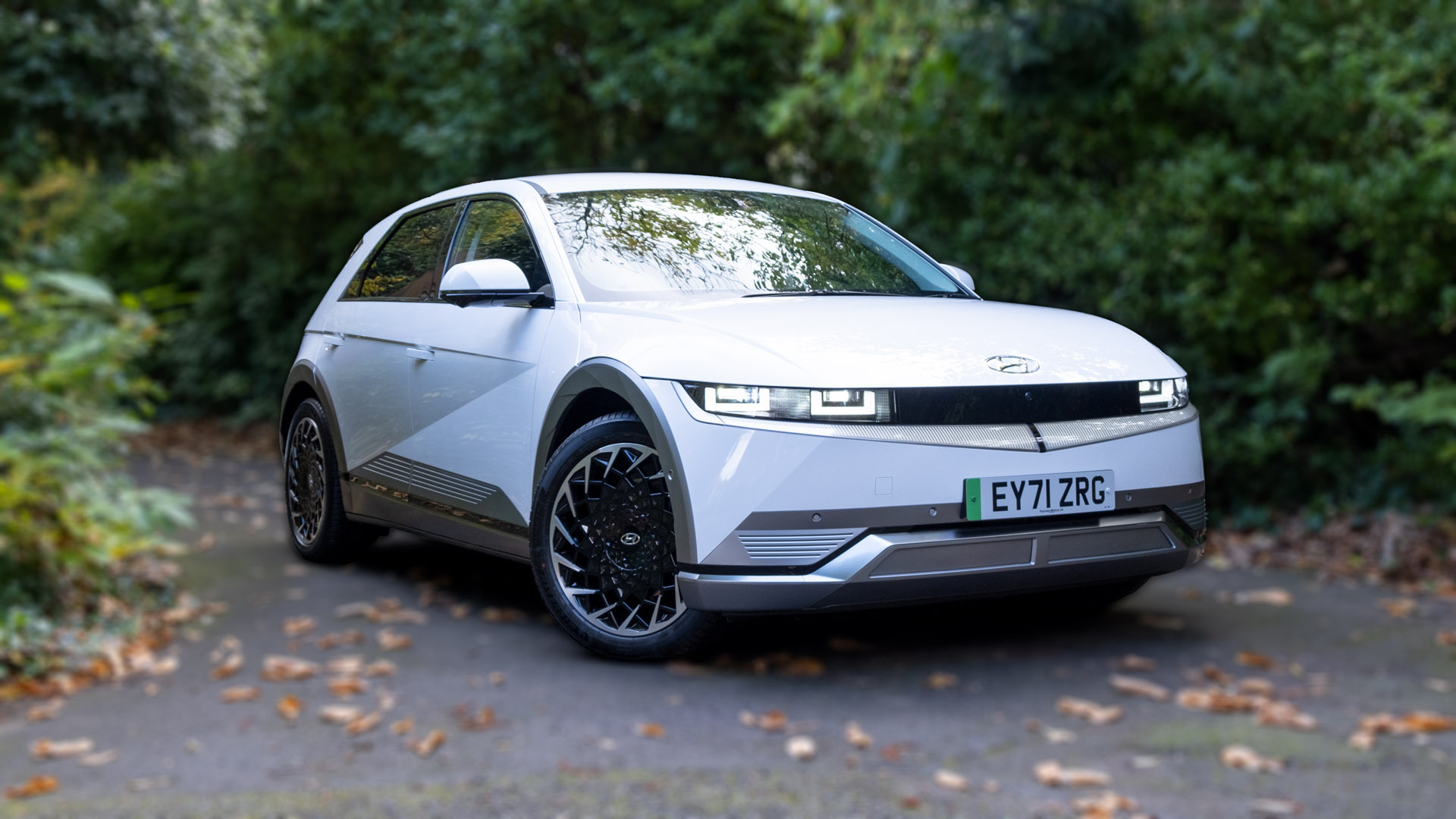The Hyundai Ioniq 5 is a vehicle that takes aim at both fully electric saloons and SUVs, whereby it looks like a saloon but has the storage capacity of a much larger vehicle. Alongside its sibling, the Kia EV6, it’s the first to be built on Hyundai’s Electric Global Modular Platform (E-GMP). The all-electric platform is built around an 800-volt architecture, which allows it to accept an ultra-rapid charge.
In this review, we’ll look to see how it compares to the likes of the Tesla Model 3 and Polestar 2, and SUVs such as the Volvo XC40 Recharge Twin Pro and Audi Q4 e-tron.
If you’d prefer to watch a review of the Hyundai Ioniq 5, head on over to our YouTube channel.
Hyundai Ioniq 5 price & competition
The Ioniq 5 comes in three different trims: the SE Connect at £36,995, the Premium at £39,295 and the Ultimate at £42,295. A full breakdown of the differences can be found below (click to expand):
It is worth noting, however, that the SE Connect (£36,995) is only available as a rear-wheel drive (RWD) configuration, where its motor outputs 125 kW (168 hp) of power and 350 Nm of torque. It also has a 58 kWh battery pack that has a claimed WLTP range of 238 miles.
Find the best Hyundai Ioniq 5 deals
The Premium trim is also available with the same motor/battery configuration as listed above (£39,295). Should you want more power and range, the £41,945 variant provides 160 kW (214 hp) of power and 350 Nm of torque; thanks to its larger 72.6 kWh battery pack it nets a claimed 298 miles on the WLTP test cycle, too. Move up to the Premium all-wheel drive model at £45,145 and you’ll get 224 kW (301 hp) of power and 605 Nm of torque. However, the range one can attain from its 72.6 kWh battery pack drops to 285 miles.
As for the Ultimate trim, it’s similarly poised as the Premium trim, however, its quoted range figures sit at 238 for the 58 kWh RWD (£42,295), 280 miles on the 72.6 kWh RWD (£44,945), and 267 miles with the 72.6 kWh AWD model (£48,145) – the latter being on review.
Buy a car phone mount on Amazon (Affiliate)
Moving on, the Hyundai Ioniq 5 faces competition from many all-electric SUV and saloon vehicles – in the former, you have: the Mercedes EQA 250 from £44,495 (263 miles WLTP); the Audi Q4 40 e-tron at £44,990 (316 miles WLTP); the Volvo XC40 Recharge Twin at £49,950 (259 miles WLTP); the BMW iX3 from £59,730 (285 miles WLTP); the larger Audi e-tron at £62,025 (227-271 miles WLTP); the Jaguar I-Pace at £65,245 (292 miles WLTP); the Mercedes EQC at £65,720 (255 miles WLTP); and the Tesla Model X at £102,980 (348 miles WLTP).
Elsewhere, there are other SUVs one might want to consider: the MG ZS EV starts from £28,495 (273 miles WLTP); the Kia Soul EV, e-Niro ‘2 64’ and the Hyundai Kona Electric Premium 64 kWh (282 miles WLTP) all come in at £32,445. The Skoda Enyaq iV 60 (256 miles WLTP) starts from £32,010, while the larger battery variant, the Enyaq iV 80 (331 miles WLTP) starts from £39,365. Likewise, the Volkswagen ID.4 has a similar configuration to that of the Skoda, with the 52 kWh battery pack model (213 miles WLTP) coming in at £32,495, and the 77 kWh variant (310 miles WLTP) starting from £42,020. You’ve also got the MG5 EV, an all-electric estate with a claimed range of 250 miles WLTP that starts from £26,495.
As for saloons and hatchbacks, there are a plethora of options, too: the sporty-looking Polestar 2 starts from £39,990, the efficient Tesla Model 3 from £42,990; the well-rounded VW ID.3 from £30,935; the practical Hyundai Ioniq Electric from £30,550; the spacious Renault Zoe from £27,495; and the comfy Nissan Leaf from £25,995.
Read next: Volvo XC40 Recharge Twin review: A powerful luxury electric SUV
Hyundai Ioniq 5 exterior review
From the exterior, the Ioniq 5 is a real head-turner – from its large-sized 19-20″ alloys to its 8-bit looking headlights and taillights. In some ways, it reminds us of the quirky-looking Honda e, however, by comparison, the South Korean automaker’s EV has a far bigger footprint on the road. It’s 4.635m long, has a 3m-long wheelbase, is 2.152m wide and 1.605m tall – it might take you by surprise seeing the vehicle in person versus what you see online.
Sheer size aside, we find its exterior aesthetics stunning. It stands out from the rest of the pack, where it has a stylish and sporty look. Of course, looks are subjective but objectively Hyundai has thought about accessibility and aerodynamic efficiency by incorporating a clever design with the vehicle’s door handles. Unlike the Tesla Model 3, which requires a certain technique from the outside, the Inoiq 5’s handles prop open when unlocked making it easy enough to access, and yet retract into the respective door frames when the car is locked or in Drive – improving aerodynamic efficiency.
As for paint, it’s available in ‘Mystic Olive Green Pearl’ as standard. The pictured ‘Atlas White Solid’ comes in at a £300 premium, while ‘Galactic Grey Metallic’, ‘Cyber Grey Metallic’, ‘Phantom Black Pearl’, ‘Lucid Blue Pearl’, and ‘Digital Teal Green Pearl’ cost £585. ‘Shooting Star Grey Matte’ and ‘Gravity Gold Matte’ cost £656 instead.
Read next: Volkswagen ID.4 review: Better than the VW ID.3?
Hyundai Ioniq 5 interior review
Moving onto its interior design, it’s very sleek. Hyundai has even opted to remove any branding on the steering wheel to provide a sense of calmness. One could argue, however, that the choice of materials around the cabin isn’t as premium as some of its rivals – hard plastic resides around the dashboard, door frames and the centre console.
The automaker’s choice of having two 12.3″ displays sitting side-by-side also isn’t as intuitive as one might think – having the centre-weighted screen angled towards the driver would have made for a more practical design. Similarly, the use of touch-based climate controls under a line of physical shortcut buttons positioned towards the centre of the dashboard seems a little unnecessary. The former makes it fiddly to adjust the in-cabin temperature and fan speed while on the move.
On the plus side, a physical knob makes it easy to adjust the media volume and a flurry of physical buttons on the steering wheel means it’s easier to interact with the instrument cluster and adjust the vehicle’s settings. A Drive Mode button, which looks similar to that of the Porsche Taycan, also provides quick access to said settings.
Behind the steering wheel, there are two flappy paddles that allow the driver to adjust the regenerative braking level – we’ll hone into this feature further down in this review. Elsewhere, you’ll find a dedicated gear selector stalk, which to us, makes for a very intuitive means to select Drive, Reverse, Neutral and Park.
Shifting our attention to the use of technology, the 12.3″ instrument cluster is vivid, comprehensively laid out and somewhat customisable. It’s a shame, however, that routing data from Android Auto and Apple CarPlay isn’t supported. Similarly, in the Ultimate trim, you’ll find the omission of this information on the Heads Up Display (HUD). The projected screen that appears on the driver’s side windshield is otherwise an excellent addition; it integrates artificial reality (AR) when one uses the system’s built-in navigation system and bolsters the vehicle’s safety credentials by showing key information, such as your current speed.
As for the main 12.3″ display, it’s very fluid and easy to navigate. It also supports both aforementioned mobile operating systems, however, doesn’t fully utilise the entire width of the display; for example, one-third is rendered useless when using Android Auto – we noted similar behaviour in Hyundai Group’s other vehicles, too.
When it comes to connectivity, the infotainment system supports Bluetooth and a wired connection via USB. The latter is preferable for higher-fidelity audio playback. Speaking of which, Hyundai integrates four speakers in its SE Connect and Premium trims, but goes a step further in the Ultimate trim by offering an eight-speaker Bose sound system. If you’d like to hear how the latter system sounds, watch our detailed review on YouTube.
Hyundai Ioniq 5 storage review
The Ioniq 5’s cabin design provides a sense of spaciousness and calmness; the non-tethered centre console, which often features in cars, helps provide this extra layer of comfort. Hyundai goes a step further with the Ultimate trim, as the centre console can be moved back and forth to create more room at the front or rear of the cabin, respectively.
Within the centre console, you’ll also find ample amounts of storage capacity. There are two cupholders, a non-slip area for your remote, a Qi wireless charging bay for a smartphone that resides below two USB Type-A charging ports, and a large open-aired area to store valuables. Within the front armrest, there’s even more storage space one could use. Ahead of the centre console, there’s a compartment that can cater for a smartphone, where there is a single USB Type-A port that can be used to connect up to the infotainment system and here you’ll also find a 12V socket. At the rear, there’s a pull-down armrest that reveals two cupholders, and at the back of the centre console, there’s also a small storage compartment with two USB Type-A ports.
Find the best Hyundai Ioniq 5 deals
As for the glove compartment, it opens up a little differently from other vehicles on the market, whereby it has a sliding (and not opening) mechanism; this makes it easier and more accessible for the front passenger to open the compartment. The door bins are also plenty large, namely those at the front that can store a 500ml bottle alongside a purse or wallet.
It is, however, the Hyundai Ioniq 5’s boot capacity that really impresses. Indeed, with the seats up there’s a whopping 520 litres, and with them folded down, this figure goes up to 1,587 litres. Put it into perspective, here’s how it stacks up to its all-electric rivals: the Audi e-tron (660/1,725 litres); Skoda Enyaq iV (585/1,710 litres); VW ID.4 (543/1,575 litres); Audi Q4 e-tron (520/1,490 litres); MG5 EV estate (464/1,456 litres); Kia e-Niro (451/1,405 litres); Peugeot e-2008 (434/1,467 litres); MG ZS EV (448/1,375 litres); Volvo XC40 Recharge Twin Pro (452/1,328 litres); Kia Soul EV (315/1,339 litres); Mercedes EQA (340/1,320 litres); Citroen e-C4 (380/1,250 litres); Nissan Leaf (435/1,161 litres); Hyundai Ioniq Electric (357/1,417 litres); Tesla Model 3 (425/1,235 litres); VW ID.3 (385/1,267 litres); Renault Zoe (338/1,225 litres); Polestar 2 (405/1,095 litres); Mazda MX-30 (341/1,146 litres); Hyundai Kona Electric (332/1,114 litres).
Better still, the rear seats can be brought forwards to reveal some extra space, while the charging cables can be stored within the underfloor boot compartment. As for the front of the vehicle, there’s some additional storage space, too. The frunk area on the rear-wheel drive model is large enough to store a few shopping bags, but on the all-wheel drive variant that we have on review, it’s rather limited due to the second motor being placed on the front axle. Nevertheless, no matter which model you end up choosing, Hyundai provides plenty of storage options with the Ioniq 5.
As for convenience, there’s an electric tailgate with a hatchback design that comes as standard. Should you want the ‘Smart Electric Tailgate’, which automatically opens the boot as you approach it, you’ll need to opt for either the Premium or Ultimate trim instead. Elsewhere, there’s a retractable and removable boot lid, and 60:40 split-folding rear seats that allow you to take elongated goods. It’s a shame, however, not to see a 20:40:20 design used instead.
Read next: Skoda Enyaq iV review: The Volkswagen ID.4 alternative
Hyundai Ioniq 5 comfort review
The sense of spaciousness also extends within the cabin, where five occupants can easily be seated. Here, 6-foot 4-inches (193cm) individuals won’t feel henned in at the front nor rear of the cabin. It’s also rather impressive to see that the rear seats can be reclined to a certain degree, further bolstering the seating comfort.
However, at the front, it’s a shame that on the SE Connect heated and electronically adjustable seats, and a heated steering wheel don’t come as standard; you’ll need to opt for one of the more expensive trims instead. Likewise, should you want heated rear seats – excluding the middle one – you’ll have to splash out on the Ultimate trim.
Nevertheless, the seats are all comfortable and in the Premium or Ultimate trims one can bolster the experience by having the front two fully recline – there’s even an electronically-adjustable footrest. Our only complaint with this, however, is that if you were to fully recline you’ll be starring at the roof lining. Here, a panoramic sunroof doesn’t come fitted as standard nor is it available as an option, at least not at the time of writing within the UK; it’s worth noting that in certain territories this can be selected as an additional option.
As for cabin noise, the Ioniq 5 does a valiant job at providing a quiet environment. However, we noticed a bit of rattle from the passenger’s door frame and the rear parcel shelf or headrests. At least in our tested model, we noticed this while traversing at higher speeds and rougher terrain, respectively. It’s something to look out for if you manage to test drive the Ioniq 5, as it did dampen our otherwise serene in-cabin experience.
Read next: Tesla Model 3 review (2021 facelift): Should you buy into the hype?
Hyundai Ioniq 5 performance review
Continuing on the aspects of comfort, we found the suspension setup to be a little more on the stiff side but still perfectly comfortable when faced with speed bumps and potholes. As a result, the Ioniq 5 holds itself pretty well on windy country roads, providing minimal body roll for a vehicle of its size and class. Granted, it won’t stay as planted to the ground nor offer the same driver’s feel as the Polestar 2, Tesla Model 3 or VW ID.3 but it does provide a heightened experience over the likes of the Renault Zoe, Nissan Leaf, and the Kia e-Niro.
As for raw performance, it’s up there with some of the fastest all-electric vehicles on the market. We netted a 0-60mph time of 4.87 seconds with the all-wheel drive (AWD) Ultimate trim, a figure that will certainly leave many impressed. This is made possible thanks to the combination of two motors that output 224 kW (301hp) of power and 605 Nm of torque. Unsurprisingly, the rear-wheel drive (RWD) models aren’t as nippy where they offer 125 kW (168hp) or 160 kW (214hp) of power and 350 Nm of torque instead – the 58 kWh and 72.6 kWh battery pack variants offer different power outputs. The top speed on all models is limited to 115mph.
Buy a car phone mount on Amazon (Affiliate)
This perfectly leads us onto range, whereby the automaker claims anything between 238 miles to 298 miles on the WLTP test cycle. Our tested 72.6 kWh AWD Ultimate model is said to attain 267 miles on a single charge. While we weren’t able to hit this figure in our mixed driving tests, we did hit a very respectful 230-250 miles. This should suffice for a lot of consumers, however, when pitted against some of its rivals, you’ll find our tested Ioniq 5 isn’t as impressive for its asking price. Here, the small VW ID.3 achieves 230 miles, the Volvo XC40 Recharge Twin Pro and Polestar 2 (with heat pump) achieve 230-250 miles; the Audi Q4 e-tron, the Kia e-Niro, the Kia Soul EV, the Hyundai Kona Electric, and the Volkswagen ID.4 all achieve 260 miles; the Skoda Enyaq iV nets closer to the 300-mile mark, while the Tesla Model 3 RWD achieves between 230-250 miles, with the Long Range model still reigning supreme at a tested 310 miles.
Ultimately, when it comes to range, the Ioniq 5 is neither the best nor worst EV. Of course, one might attain more range if you drive conservatively, or significantly less if you choose to consistently drive in Sport mode.
What does impress, however, is the degree of customisation Hyundai offers with regenerative braking. Here, there are numerous modes to choose from by either using the flappy paddles behind the steering wheel to select between Level 0, 1, 2, 3 or relying on ‘Auto mode’ that can be tailored to your liking via the infotainment system. Here, you can select low, medium or strong to let the vehicle dynamically adjust the level of braking depending on the level of harshness you’ve previously selected.
The best out of the bunch, at least for us, is i-Pedal mode, which allows for one-pedal driving. Unlike the Kia e-Niro, the Kia Soul EV and the Hyundai Kona Electric you can bring the vehicle to a complete standstill by simply lifting your foot off the accelerator pedal, rather than having to hold the left flappy paddle while on Auto mode. This makes inner-city driving a breeze and certainly one-ups its competitors that don’t offer the same level of customisation. Better still, in the Hyundai, it saves your previously-used mode, which means you don’t have to set the level of regenerative braking each time you step foot inside the cabin – yet another much-loved trait of the Ioniq 5, namely when compared to its rivals.
In order to recharge the vehicle at a much more rapid rate you can, of course, plug it in. Thanks to its 800-volt architecture, the Korean automaker supports up to 220-225 kW of input via the CCS charging port. This allows you to go from 10-80% charge in roughly 18 minutes. Opt for a more commonly found 50 kW input and it’ll take around an hour instead.
For home or workplace chargers, the Ioniq 5 has a 10.5 kW onboard charger and a Type 2 port, which means it’ll take around 9 hours from empty to full using an 11-22 kW charge point. Hook the vehicle up to a 7 kW charger and this figure increases to 16 hours. A 3-pin input will take in excess of 25 hours.
In the Ultimate trim, there’s also Vehicle-to-Load (V2L) technology. This means you can power a regular household appliance such as a kettle or charge a laptop via the 3-pin socket found below the rear middle seat. Via an optional adapter, you can even charge another EV using the vehicle’s Type 2 port.
It’s just worth being mindful that the maximum power output is rated at 3.6 kW/220 Volts. As such, it’ll take an excruciatingly long time to charge another vehicle but does serve its purpose if you’re camping, for example, if you want to boil the kettle – you can see it in action on our YouTube channel, Instagram feed or TikTok page.
Hyundai Ioniq 5 safety review
When it comes to safety, the Hyundai scored 5/5 stars in Euro NCAP’s rigorous crash tests; it managed 88% and 86% in the Adult and Child Occupancy tests, respectively. As for the driver assistance systems, the Ioniq 5 offers a slew of impressive features that come as standard. In the SE Connect, you’ll find smart cruise control, lane follow assist, lane-keeping assist, highway driving assist (level 1), leading vehicle departure alert, intelligent speed limit assist, high beam assist, rear cross-traffic alert and driver attention warning.
Note, lane-keeping assist gets enabled each time you turn on the vehicle but thankfully can easily be disabled by long-pressing a button on the steering wheel. By comparison, in other vehicles, one has to faff around with the infotainment system, which in itself is a safety hazard.
In the Premium and Ultimate trims, you get Level 2 autonomous driving capabilities, forward collision avoidance and a blind-spot monitoring system. The latter works by integrating cameras on both wing mirrors and once you indicate, the appropriate camera will show the appropriate blind spot through real-time video on your instrument cluster; it’s a fantastic inclusion and one we’d love to see on all vehicles.
On the subject of visibility, the Ioniq 5 offers large windows which make it easy to see your surroundings. The A-pillars are also slender, making it easy to peer around corners, unlike the chunky ones found on the Tesla Model 3. When it comes to parking, rear parking sensors come as standard on the SE Connect. Unfortunately, should you want front and rear parking sensors alongside a rearview camera, you’ll need to get either the Premium or Ultimate trim.
Read next: Polestar 2 review: The all-electric muscle car
TotallyEV’s verdict on the Hyundai Ioniq 5
The Hyundai Ioniq 5 is a unique-looking electric vehicle, which undoubtedly ticks a lot of boxes. It’s got ample amounts of storage space, is nippy, offers a good all-electric driving range, and has plenty of useful features.
The issue it has, however, is competition even from within Hyundai’s portfolio of EVs. Here, the more affordable Hyundai Kona Electric, Kia e-Niro and Kia Soul EV all offer a compelling package should storage space and raw performance not be your utmost priority. Should these factors be a necessity, then the Volvo XC40 Recharge Twin Pro, Skoda Enyaq iV and to a degree the Audi Q4 e-tron all offer an excellent alternative.
Find the best Hyundai Ioniq 5 deals
Then, you have the VW ID.3, which is an affordable and fun-sized EV; the Polestar 2 that has excellent driving dynamics, and finally the excellent Tesla Model 3, which provides class-leading driving range and a comprehensive charging infrastructure.
Suffice to say, you have plenty of options. Would you pick the Hyundai Ioniq 5 over its rivals? Let us know in the comments section below or via social media; we’re on: YouTube, Instagram, Facebook, Twitter and LinkedIn.

